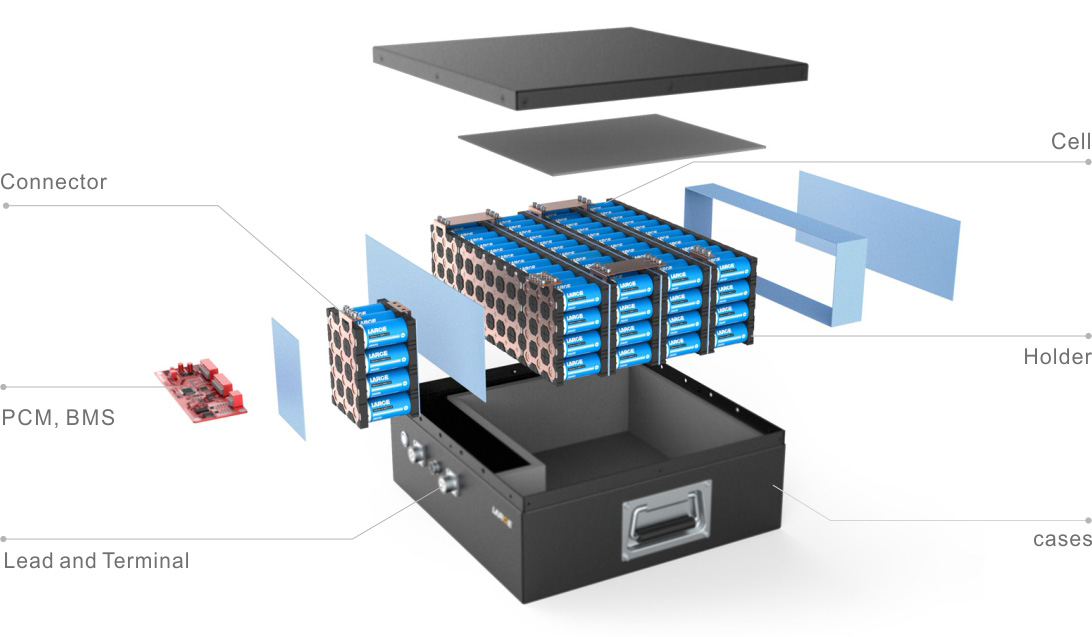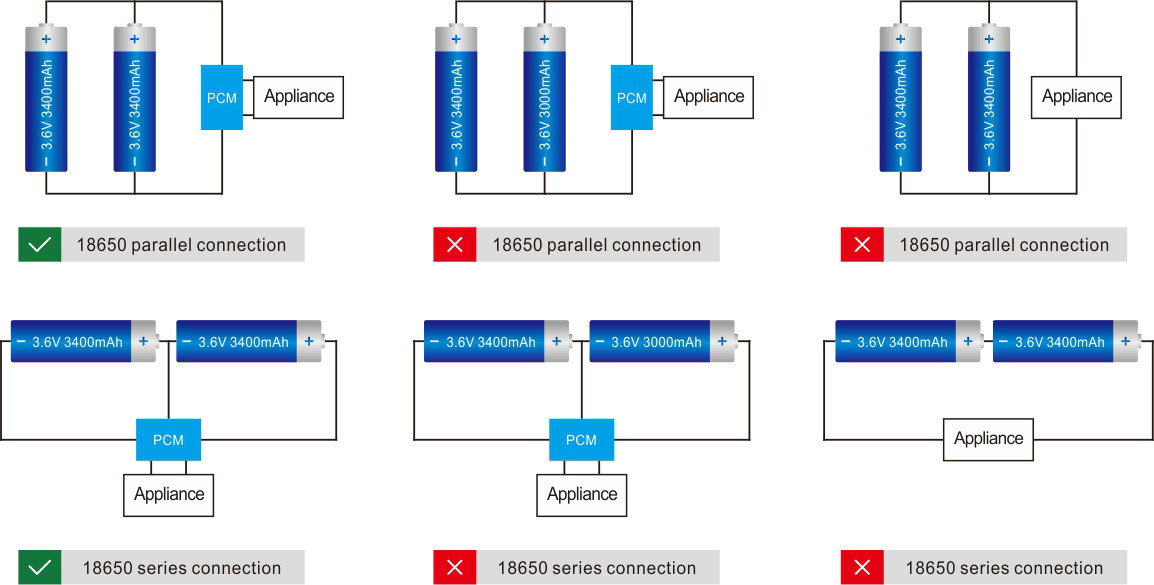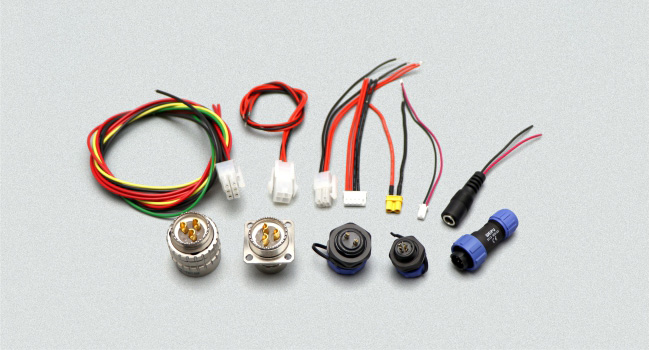Lithium battery series and parallel definition
Due to the limited voltage and capacity of the single battery, in actual use, a series-parallel combination is required to obtain a higher voltage and ability to meet the existing power supply requirements of the equipment.
Lithium batteries in series: the voltage is added, the capacity remains unchanged, and the internal resistance increases.
Lithium batteries in parallel:
The voltage remains the same.
The capacity is added.
The internal resistance is reduced.
The power supply time is prolonged.
Lithium battery series and parallel: Both parallel combination and series combinations are in the middle of the battery pack, increasing the voltage and capacity.
Series voltage: 3.7V single cells can be assembled into a battery pack with a voltage of 3.7*(N)V according to needs (N: number of single cells)
Such as 7.4V, 12V, 24V, 36V, 48V, 60V, 72V, etc.
Parallel capacity: 2000mAh single battery can be assembled into a battery pack with a total of 2*(N)Ah as needed (N: number of single cells)
Such as 4000mAh, 6000mAh, 8000mAh, 5Ah, 10Ah, 20Ah, 30Ah, 50Ah, 100Ah, etc.
Lithium Battery PACK
Lithium battery PACK refers to the processing, assembly, and packaging of lithium battery packs. The process of assembling lithium batteries into groups is called PACK, which can be a single battery or a lithium battery pack connected in series and parallel. The lithium battery pack usually comprises a plastic case, a protective plate, a battery cell, an output electrode, a connecting tab, other insulating tapes, double-sided tape, etc.
Lithium batteries: the core part of finished batteries
Protection board: play overcharge, over-discharge, overcurrent, short circuit, NTC temperature control intelligent protection, and other functions.
Plastic shell:
The support frame of the entire battery
The positioning and fixing of the protective plate
Carrying and limiting all other non-shell components
Terminal lead: It can provide various terminal line charging and discharging interfaces for electronic products, energy storage products, and backup power supplies.
Nickel sheet/bracket: the connection and fixing components of the battery cell

Lithium battery series and parallel combination
The lithium battery must be connected with a protection board to monitor each battery for safety reasons. Generally, it is not recommended to use the battery in parallel. If the battery is connected in parallel, the consistency of the battery parameters (capacity, internal resistance, etc.) must be ensured. The batteries used in the series must also have the same parameters. Otherwise, the battery pack's performance will be much worse than the performance of a single cell.

Lithium battery pairing standard Voltage difference ≤10mV, internal resistance difference ≤5mΩ, capacity difference ≤20mA
1. Series and parallel combination of lithium batteries
Two series lithium battery combination (7.4V lithium battery)

Three series lithium battery combination (11.1V lithium battery)

Four series lithium battery pack (14.8V lithium battery)

Six series lithium battery pack (22.2V lithium battery)

2. Lithium battery pack wire/terminal
The length of the plug and lead of the lithium battery pack can be customized at will, and the choice is made according to the customer's electrical equipment.

3. Calculation of series and parallel connection of lithium battery packs
We all know that the series voltage of lithium batteries increases, and the parallel capacity increases, so how to calculate how many series and parallels of a lithium battery pack and how many cells are composed?
Before performing calculations, we need to know what cells are used to assemble this lithium battery pack because different cells have different voltage capacities. When formed into a specific specification of lithium battery packs, the number of series and parallels required is different. The market's common types of lithium batteries are 3.7V for lithium cobalt oxide, 3.6V for ternary, 3.2V for lithium iron phosphate, and 2.4V for lithium titanate. The capacity varies depending on the size, material, and manufacturer of the battery.
Take 48V 20Ah lithium battery pack as an example
Assuming that the specification of the single-cell used is 18650 3.7V 2000mAh
Assuming that the specification of the single-cell used is 18650 3.7V 2000mAh
Number of cells in parallel: 20Ah/2Ah=10 or ten parallel (10 cells in parallel)
The whole set of batteries is 13 strings × ten cells = 130 cells.
Contact Person: Miss. Elsa Liu
| WhatsApp : | +8617763274209 |
|---|---|
| Skype : | +8617763274209 |
| WeChat : | 17763274209 |
| Email : | Elsa@lifepo4-battery.com |